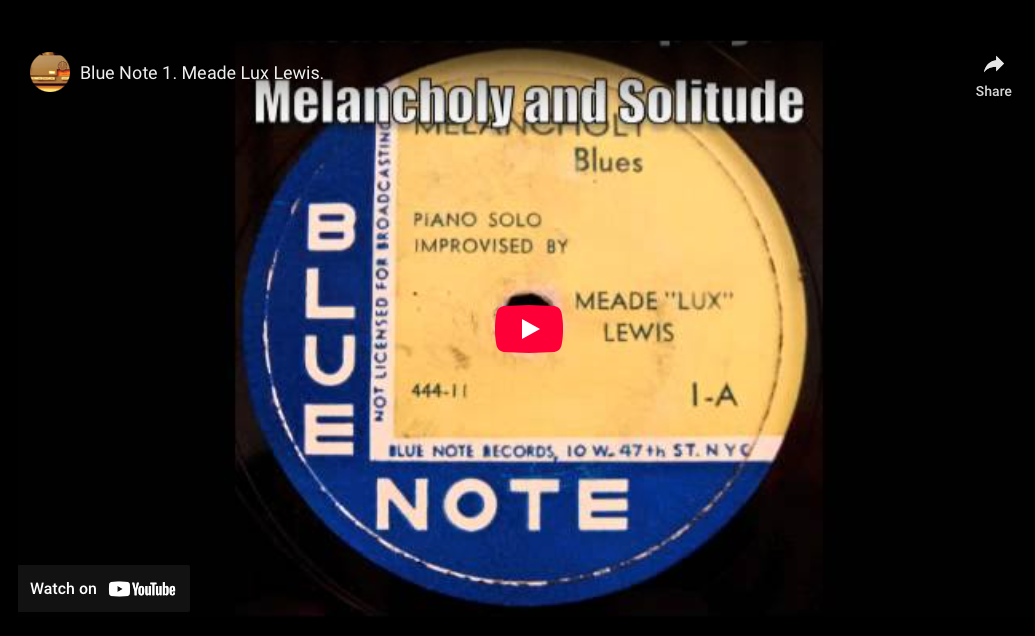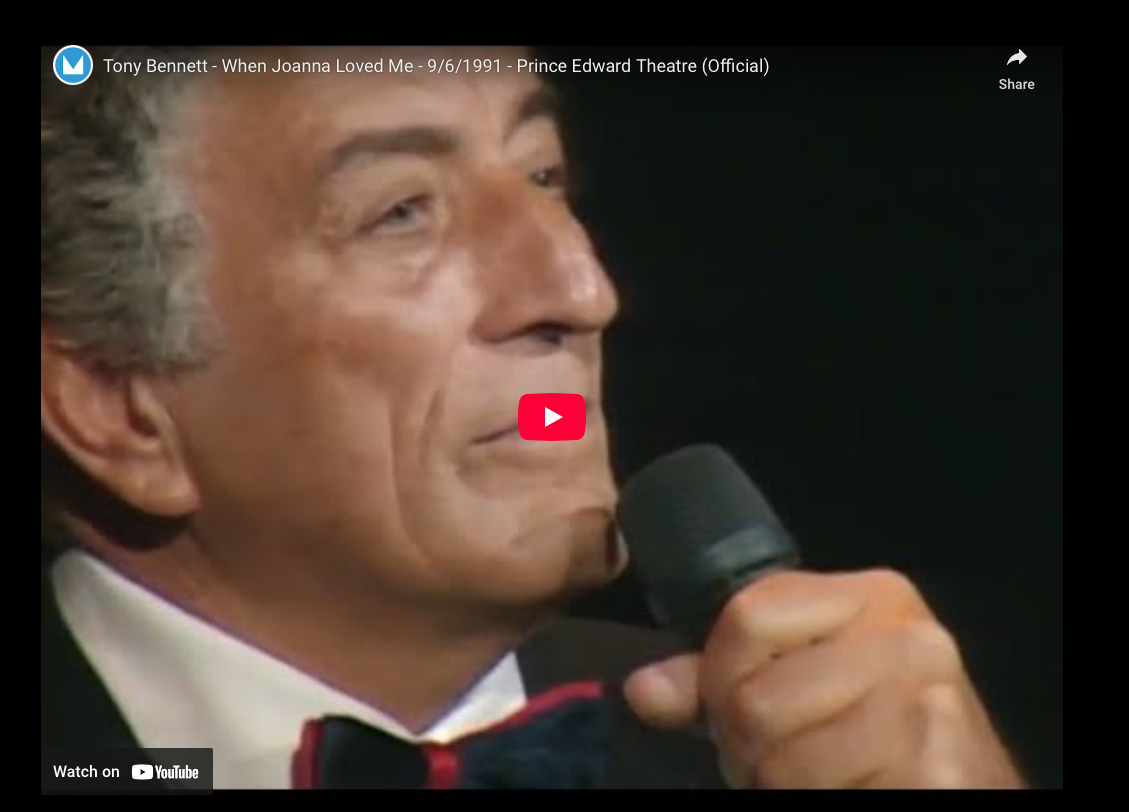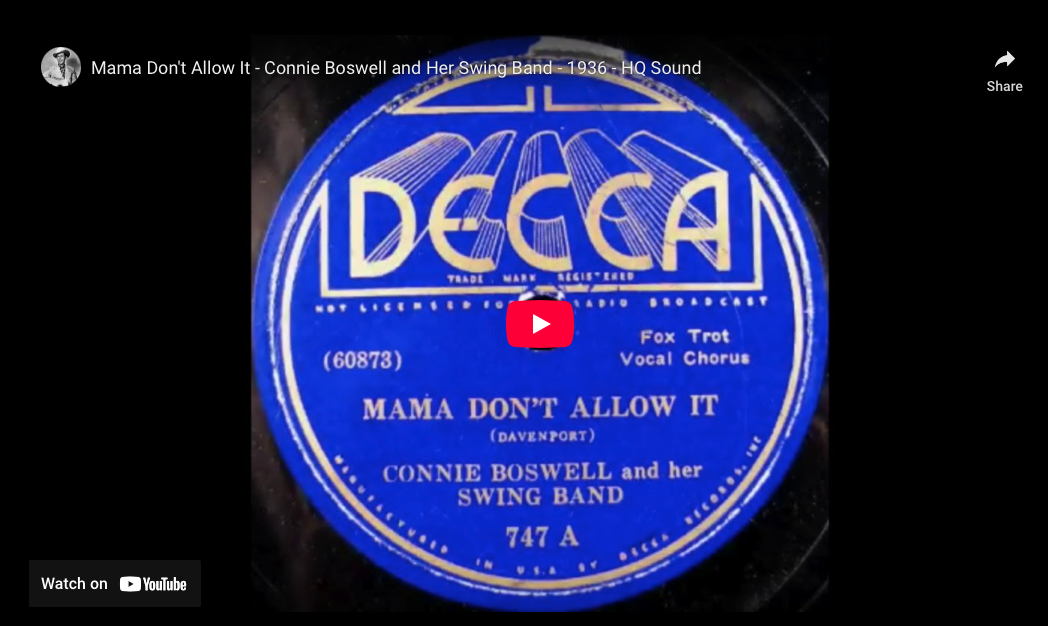The Jazz Archives
This Archive of jazz videos based on the articles of Wim Demmenie is in the process of being transferred from the “Classic Jazz Lovers” Facebook group. Please bear with us as we complete this transition.

Jimmie Lunceford—”My Blue Heaven” (1935)
On December 23, 1935, Jimmy Lunceford and his Orchestra recorded one of the greatest hits of the swing era for Decca in New York. This popular song, “My Blue Heaven,” was originally composed for the Ziegfield Follies of 1927 by New Yorker Walter Donaldson (1893-1947) with lyrics by Chicagoan George Whiting (1884-1943).

Paul Cambers—”Softly As In A Morning Sunrise” (1957)
Half a century ago, the music world was shaken by the death of one of the most gifted prodigies jazz had ever seen, 33-year old double bass player Paul Chambers. Here he is with “Softly, As In A Morning Sunrise,” a 1928 classic tune by Hungarian-American composer Sigmund Romberg (1887-1951).

Lester Young—”Mean To Me” (1958)
On Thursdays in 1958, Art Ford’s “Jazz Party” could be seen on New York’s WNTA-TV from May 8, 1958 to December 25. Episode #1.20 was aired on September 25, 1958. It had brought a variety of top jazz musicians to the New Jersey recording studio: Charlie Shavers and Henry Red Allen-trumpets; J.C. Higgenbotham and Dicky Wells-trombones; Pee Wee Russell and Buster Bailey-clarinets; Willie the Lion Smith-piano; Dick Thompson-guitar; Vinnie Burke-double bass; Sonny Greer-drums and tenors Coleman Hawkins and Lester Young, with the latter featuring in “Mean To Me.”

Jerry Roll Morton—”I’m Alabama Bound” (1938)
Between May and October 1938, pianist/composer Ferdinand Joseph LaMotte (1890-1941) -- better known as Jelly Roll Morton -- was given the opportunity to make a series of Library of Congress recordings organized by folk-archivist Alan Lomax. Morton, accompanied by his own piano, talked about his compositions and played and sung 52 illustrative songs, which were all recorded on matrices. The first one was “Alabama Bound.”

Stan Getz & Mary Lou Williams in Concert (1978)
This week two classic jazz tunes during a Summer concert. First “My Blue Heaven,” composed in 1924 by New Yorker Walter Donaldson (1893-1947). The second tune on this video clip is “Lush Life” which was composed a decade later by Billy Strayhorn (1915-1967).

Lux Lewis—”Melancholy” & “Solitude” (1939)
Eighty years ago, Alfred Lion, Francis Wolff and Max Margulis founded a new record label called Blue Note records. The first record, labeled BN-1 contained two blues compositions by Meade “Lux” Lewis: “Melancholy” and “Solitude,” which were both recorded in New York on January 6, 1939.

Beverly Kenney—”Life Can Be Beautiful” (1958)
Looking out of my window to the sunlit surroundings I’m thinking “Life Can Be Beautiful.” Which is title of a classic jazz ballad composed in 1948 by Jimmy McHugh, with lyrics by Harold Adamson. Between December 2, 1957 and January 28, 1958, 25-year old jazz singer Beverly Kenney (1932-1960) recorded it in New York City for her Decca album “Beverly Kenney Sings for Playboys.”

Jimmie Lunceford—”For Dancers Only” (1937)
Alto saxophonist and bandleader Jimmie Lunceford made a great reputation at the Cotton Club in 1934 with powerful swinging hot style in arrangements by Will Hudson and trumpeter Sy Oliver. Oliver did much to form the band’s style and identity. This is Oliver’s arrangement of his own composition “For Dancer’s Only,” recorded for Decca in New York on June 15, 1937, featuring alto saxophonist Willie Smith and trumpeter Freddie Webster.

Catherine Russell—”Don’t Take Your Love From Me” (2016/1940)
Musician/songwriter and actor Henry Nemo (1909-1999) wrote several beautiful songs which became real classics, such as his first hit composition “I Let A Song Go Out Of My Heart.” Other sublime ballads he created are “Tis Autumn“ and “Don’t Take Your Love From Me,” for which he wrote both words and music in 1940. He copyrighted the latter, on May 2, 1941. Here is singer Catherine Russell’s version:

Tony Bennett—”When Joanna Loved Me” (1991)
In the Summer of 1991, Tony Bennett, the American vocalist who was once described by Frank Sinatra as “the best in the business,” celebrated his 40th year in the music industry with a concert in England at London’s Prince Edward Theatre on Old Compton Street. One of the songs he performed was “When Joanna Loved Me,” written in 1964 by two American songwriters, composer Robert Wells and lyricist Jack Segal.

Roy Eldridge—”Heckler’s Hop” (1937)
This recording of Roy Eldridge‘s composition “Heckler’s Hop,” ranks among the very best records in his discography. In addition to the breathtaking playing of the leader, also note the magnificent drumming of Zutty Singleton.
Which Roy Eldridge record do you consider to be one of your favorites?

Connie Boswell—”Mama Don’t Allow” (1936)
Ella Fitzgerald once said “Who influenced me? There was only one singer who influenced me. I tried to sing like her all the time, because everything she did made sense musically, and that singer was Connie Boswell. Connie Boswell was doing things that no one else was doing at the time. You don’t have to take my words for it. Just check the recordings.”

George Lewis—”Burgundy Street Blues”
Between 1957 and 1967 clarinetist/composer George Lewis made three trips to Japan and a dozen tours to Europe.
Lewis’s signature tune was his own composition “Burgundy Street Blues,” performed here by clarinetist George Lewis, pianist Joe Robichaux, bass player Alcide “Slow Drag” Pavageau, and drummer Joe Watkins.

Benny Goodman—”Let’s Dance” (1939)
The Benny Goodman Orchestra’s signature tune “Let’s Dance” was probably the best know theme song of the 1930s. It was composed by pianist Josef Bonime (1891-1959), born in Vilna, Poland, and violinist Gregory Stone (1900-1991) born in Odessa, Russia. This arrangement by New Yorker George Bassman takes off from a swatch of “Invitation to the Dance” (Aufforderung zum Tanz), a 1819 piano piece written by the German romantic composer Carl Maria Von Weber (1786-1826).

Blossom Dearie—”I Wish You Love” (1965)
Singer and pianist Blossom Dearie -- who died 10 years ago this month -- appeared on TV France in 1965 performing “I Wish You Love” with the accompaniment of bass player Jacques Hess and drummer Franco Manzecchi. It is followed by a piano-duet with Jack Dieval called “Impro Blues.”

Sydney Bechet—”I’ve Found A Baby” (1932)
On September 15, 1932 Sidney Bechet directed the first recording session under his own name in the RCA Victor studios in New York. The small group was called Sidney Bechet & his New Orleans Feetwarmers and they recorded 6 titles for the Bluebird label, including Spencer Williams’ composition “I’ve Found A New Baby.”

Paul Desmond—”Emily” (1975)
The song “Emily” was composed by New York musician/arranger Johnny Mandel in 1964 as the title song for the war film drama “The Americanization of Emily” which was set in pre D-Day London. Immediately, this melody by Mandel -- who is 93 now -- found it’s way in the jazz repertoire. In September 1975 it was played by alto saxophonist Paul Desmond at the 18th Annual Monterey Jazz Festival in California, one of the world’s longest consecutive running jazz festivals.

Jimmie Lunceford—”Uptown Blues” (1939)
New York’s Harlem is located in North-Manhattan, in what you call “Uptown.” “Uptown Blues” is a fine composition by Mississippi-born Jimmy Lunceford, which he recorded with his orchestra in New York City on December 14, 1939. The soloist are alto saxophonist Willie Smith, who was working on building a reputation like Johnny Hodges and Benny Carter, and 20-year old trumpet player Snooky Young, who had just joined the band.

Young Pianist Brandon Goldberg—”Fly Me To The Moon” (2016)
Over the past year I’ve written about many jazz musicians from past generations who started out on the road to fame as toddlers. The present generation fortunately offers some natural talents too. 12 Year old Brandon Goldberg from Miami, Florida, is such a talented kid.

Duke Ellington—”Old Man Blues” (1930)
On June 24, 1930, Duke Ellington’s manager Irving Mills secured a movie deal with Radio- Keith-Orpheum Pictures. William LeBaron, vice-president in charge of R.K.O. production, signed the “the world’s hottest jazz band, Duke Ellington’s Negro orchestra” on a contract for a fee of $27,500. The band, then a sensation of New York‘s Cotton Club, would appear in “Check and Double Check,” directed by Melville Brown.
